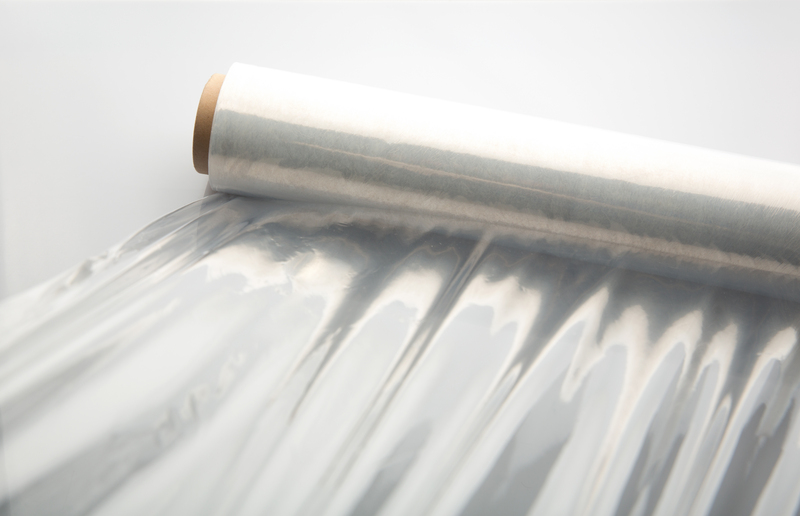Step-by-Step Guide to Cleaning Your Car Like an Expert
Posted on 10/09/2025
Step-by-Step Guide to Cleaning Your Car Like an Expert
Are you tired of your car looking lackluster, even after a trip to the local car wash? Professional car detailing doesn't have to cost a fortune. With the right techniques, tools, and supplies, cleaning your car like an expert is entirely achievable from the comfort of your driveway. This in-depth guide explores every step of the process to help you achieve showroom-level shine and preserve your vehicle's value.
Why Expert Car Cleaning Makes a Difference
A thorough car cleaning goes beyond simple aesthetics. By maintaining a clean interior and exterior, you also:
- Protect your car's paint and finish from environmental contaminants
- Preserve resale value
- Enhance driving safety by maintaining clear windows, mirrors, and lights
- Improve cabin air quality by reducing allergens and bacteria
Whether you're preparing for a sale or simply want to enjoy your ride, learning how to detail your car like a pro makes all the difference.

Preparing for an Expert Car Cleaning
Gather Your Supplies
Before starting your professional car cleaning, assemble high-quality tools and products:
- Two large buckets (for washing and rinsing)
- pH-neutral car shampoo
- Microfiber wash mitts and drying towels
- Soft-bristle brushes
- Wheel cleaner and tire brush
- Interior cleaner and protectant
- Glass cleaner (ammonia-free)
- Vacuum with attachments
- Clay bar kit (optional, for deep-cleaning)
- Quality wax or sealant
Choose the Right Location (and Time)
Expert-level car cleaning is easier in a shaded area, as sunlight can cause water spots and streaks. Early morning or evening hours are ideal when the surface is cool to the touch.
Step-by-Step Expert Car Cleaning Process
1. Clean the Wheels and Tires First
Experts always start with the dirtiest part: the wheels. These areas accumulate road grime, brake dust, and tar.
- Rinse the wheels and tires with water to loosen grime.
- Spray wheel cleaner liberally, waiting a few minutes for it to break down dirt.
- Agitate with a wheel brush, reaching between spokes and around lug nuts.
- Scrub tires to remove brown residue (tire blooming).
- Rinse thoroughly before moving on.
Do not use the same wash mitt or bucket for the body to avoid scratching the paint with grime.
2. Pre-Rinse the Entire Vehicle
A strong stream of water removes loose debris and makes the washing step safer and more effective.
- Use a hose or pressure washer to wet down the body panels, starting from the roof.
- Remove heavy dirt that could potentially cause scratches in later steps.
3. Wash Using the Two-Bucket Method
The two-bucket method is a professional car cleaning trick that drastically reduces the chance of marring the paint.
- Fill one bucket with soapy water, and another with plain rinse water.
- Dip your mitt in the soapy water, clean one section at a time.
- Rinse the mitt in the clean bucket before reloading it with soap. This removes trapped dirt and grit.
- Work from top to bottom, where the car is typically less dirty at the top and grime accumulates lower down.
- Wash in straight lines, not circles, to minimize swirl marks.
4. Rinse Thoroughly
After washing, completely rinse away soap residue, working from the roof downward.
- Use a gentle spray to avoid forcing water into seals and crevices.
- Check for missed spots and address them before drying.
5. Dry Your Car Like a Pro
Drying prevents water spots and maximizes shine--but do it right:
- Use a high-quality microfiber drying towel or a dedicated car dryer/blower.
- Pat the surface dry instead of wiping, to reduce scratches.
- Address hard-to-reach areas like mirrors, door jambs, and grilles proactively.
6. Remove Embedded Contaminants with a Clay Bar
Even after washing, contaminants such as sap, industrial fallout, and tar remain. Claying ensures your paint is truly clean and ready for protection:
- Flatten a piece of clay bar and lubricate the panel with a dedicated clay lubricant or soapy water.
- Gently rub the clay over the surface in straight lines. If it feels gritty, it's picking up contaminants.
- Wipe the area clean and inspect for smoothness.
7. Polish (Optional But Recommended)
Polishing, though not needed every time, restores gloss and removes minor imperfections:
- Apply a small amount of polish to a foam or microfiber applicator pad.
- Work in small sections, using light to moderate pressure in overlapping passes.
- Buff the residue with a clean microfiber towel.
Note: Polishing by machine yields the best results but can also be accomplished by hand.
8. Protect Your Paint with Wax or Sealant
This crucial step locks in your hard work and provides a hydrophobic, glossy finish:
- Choose between natural wax (rich shine, shorter protection) or synthetic sealant (long-lasting, highly protective).
- Apply in thin, even layers.
- Buff off with a clean and soft microfiber towel, following the product instructions for cure time.
Regular application every few months keeps your car protected from the elements.
Interior Cleaning Like an Expert Detailer
1. Remove Trash and Large Debris
- Empty the cabin of wrappers, bottles, and personal items.
- Shake out floor mats before deep cleaning.
2. Vacuum Thoroughly
Expert vacuuming covers all surfaces:
- Use crevice tools for reaching between seats and tight spaces.
- Lift floor mats and vacuum underneath.
- Vacuum seats, carpet, pedals, and even door panels and dashboards.
3. Clean and Protect Interior Surfaces
- Use appropriate cleaners for leather, plastic, vinyl, or fabric surfaces.
- Apply protectant for UV resistance on dashboards and door panels.
- Brush and clean air vents and tricky areas with a detailing brush.
Tip: Avoid using oily or greasy products on the steering wheel and pedals for safety.
4. Deep Clean Floor Mats and Upholstery
- Rubber or vinyl mats: Wash with soap and water, scrub, rinse, and dry.
- Carpet mats and seats: Treat spots with stain remover and scrub with a brush. Extraction vacuuming delivers the best results for deep stains.
5. Crystal-Clear Glass and Mirrors
Visibility is crucial, so ensure streak-free windows:
- Use a dedicated, ammonia-free glass cleaner.
- Wipe with a clean, lint-free microfiber towel.
- Roll windows down slightly to clean the top edge.
Final Touches for a Showroom-Ready Car
Revitalize Your Tires and Trim
- Apply tire dressing for a deep, satin finish (avoid excessive shine which attracts dust).
- Use trim restorer on faded plastic or rubber moldings.
Deodorize the Cabin
A fresh scent makes the job feel complete. Use an automotive-specific air freshener or odor neutralizer, not a household spray.
Inspect for Exquisite Detailing
- Walk around your vehicle in natural light to check for missed spots or streaks.
- Touch up as needed.
Hot Tips for Professional Car Cleaning at Home
- Use separate supplies for wheels and bodywork.
- Replace microfiber towels regularly to avoid scratches.
- Keep cleaning solutions off hot surfaces to prevent staining or streaking.
- Protect yourself! Wear gloves for strong cleaners and ventilate the area when using chemicals.
How Often Should You Clean Your Car Like an Expert?
How frequently you perform a deep clean depends on your driving habits and regional climate. As a rule of thumb:
- Exterior Wash: Every 1-2 weeks
- Wax/Sealant: Every 3-4 months
- Interior Vacuum: Every 2 weeks
- Full Interior Deep Clean: Every 2-3 months
Common Mistakes to Avoid in DIY Car Detailing
Avoid these errors to ensure professional results every time:
- Using household cleaning products that can damage automotive materials
- Cleaning in direct sunlight, leading to streaks and water spots
- Neglecting to rinse wash mitts, which risks scratches
- Skipping protection like wax or sealant
Expert car cleaning is as much about attention to detail as it is about technique.
Choosing Quality Car Detailing Products
Invest in recognized brands and never underestimate the value of quality microfiber. Dedicated auto care products are designed to work with modern paint finishes and delicate interior materials, providing both safety and superior results.
- Read reviews and follow manufacturer instructions.
- Avoid cheap "all-in-one" cleaners that may compromise surfaces.
- Test in an inconspicuous area first for compatibility.

Summary: Clean Your Car Like a Pro Anytime
Transforming your car at home is absolutely possible with methodical steps and the right approach. To clean your car like an expert, remember:
- Start with wheels and work your way up
- Use separate buckets and high-quality towels
- Focus on detail: thorough interior cleaning, surface protection, and finishing touches
Careful, consistent cleaning not only looks great but also protects your investment for the long term. Make this comprehensive guide your go-to reference, and enjoy that professional, pristine result every time you hit the road!
Frequently Asked Questions: Cleaning Your Car Like an Expert
- Is it better to hand-wash or machine-wash my car?
*A thorough hand wash ensures your car receives individual attention, prevents scratches, and delivers superior results compared to an automated wash*. - Can I use dish soap on my car?
No, dish soap strips essential waxes and can damage paint. Always use a dedicated car shampoo. - How do professionals get rid of water spots?
*They typically use a vinegar solution or a dedicated water spot remover, followed by buffing and protection.* - What's the benefit of applying a sealant over wax?
*Sealants offer much longer protection and are more resistant to environmental hazards, making them ideal for modern vehicles.*
Ready to get started? With this step-by-step guide to cleaning your car like an expert, your vehicle can look and feel brand new--no appointment necessary!




